Submitted by Eneida Berisha
Himara Atelier of Restoration as a Best Practice Model of Volunteering for European Cultural Heritage
Albania Architecture News - Dec 12, 2018 - 05:46 15532 views
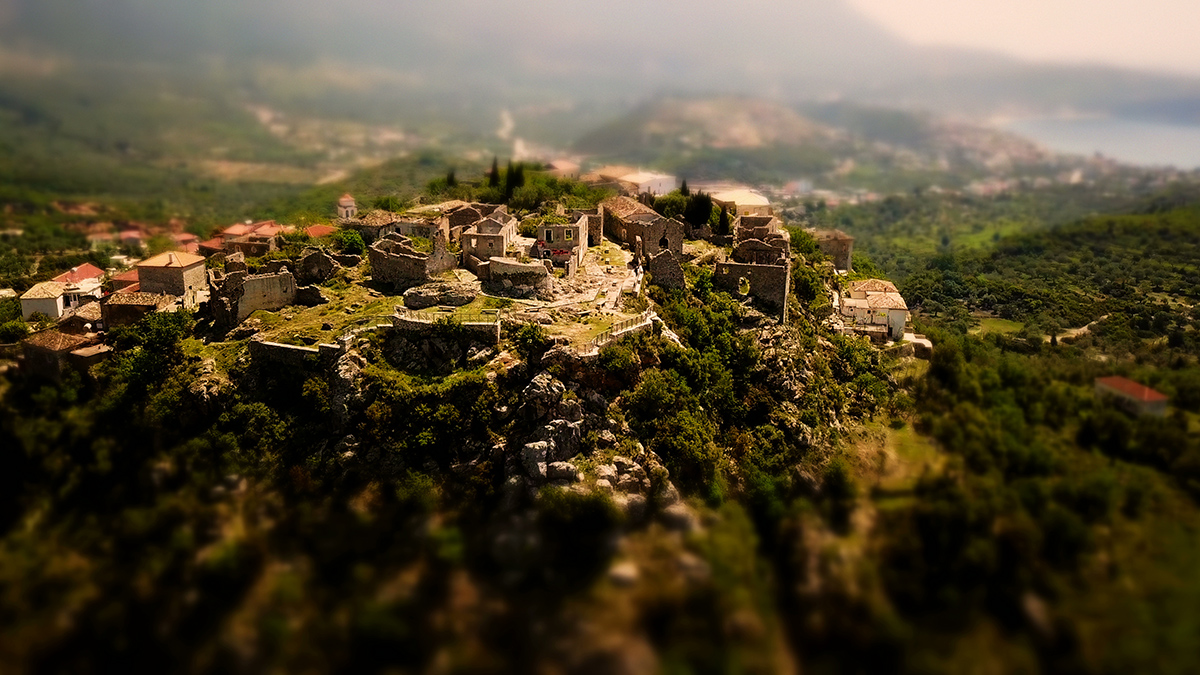
On the 10th-21st of September 2018 was held the Atelier of Restoration of St. Sergius and St. Bacchu Church & Conservation of Rural Heritage in Himara Historic Centre, jointly organized and financed by the Institute of Cultural Monuments ”Gani Strazimiri”, the Regional Directorate of Cultural Heritage Vlorë, GIZ Albania through the "Integrated Sustainable Development of the Southern Coastal Region" programme, and European Heritage Volunteers in cooperation with the Municipality of Himara.
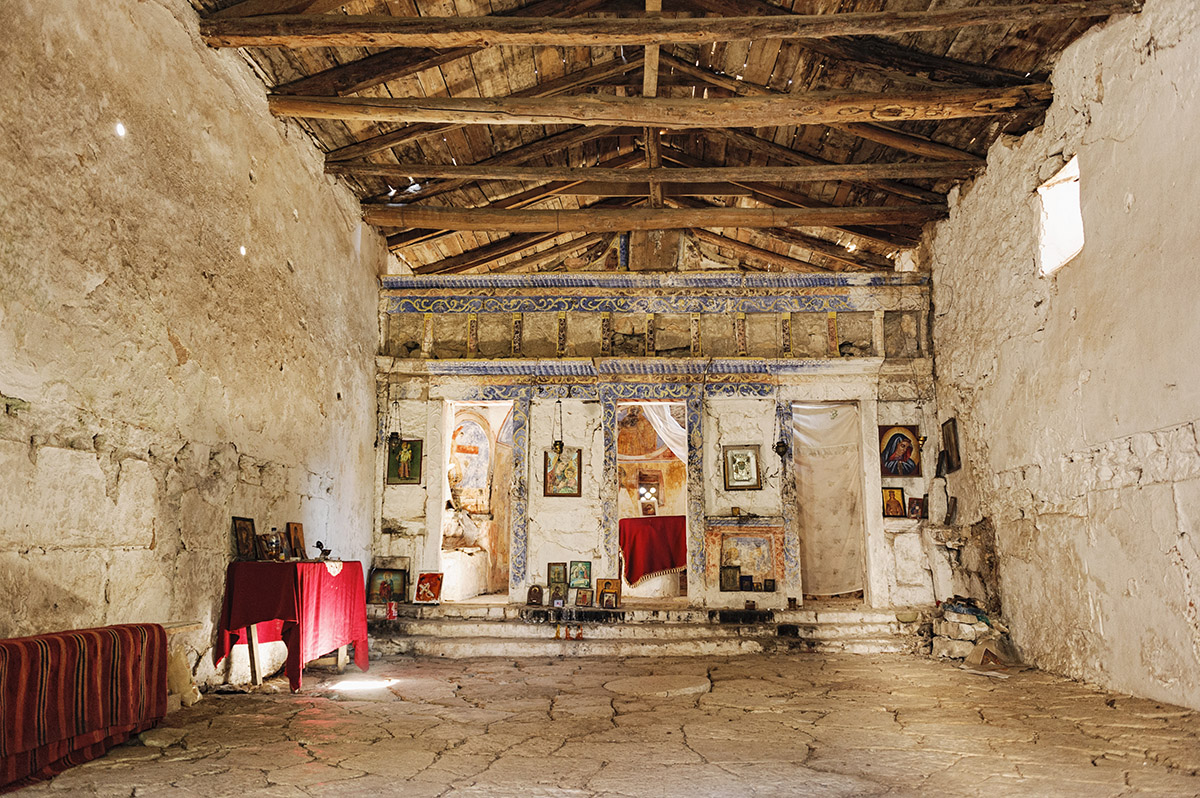
Interior of the Church. Image © Armand Habazaj, Copyright GIZ
The historic town of Himara was the perfect host for the 11-days-long activity and a melting pot for the 14 young professionals from European countries and the locals that welcomed them. The work was focused on the restoration of the roof of the old Church of Saint Sergius and Bacchu. The team of thirteen participants from European Heritage Volunteers, including here 2 coordinators was aided by the three masters carpenters and experts from the Institute of Monuments of Culture as well as the Regional Directorate of National Culture, Vlore.
Maria Paula O’Donohoe, one of the main coordinators, gives her recounts of the activity.
As a student of Anthropology she specialized in the topics of heritage and memory. Her involvement with European Heritage Volunteers started as a desire to get a more hands-on approach in the field of heritage.
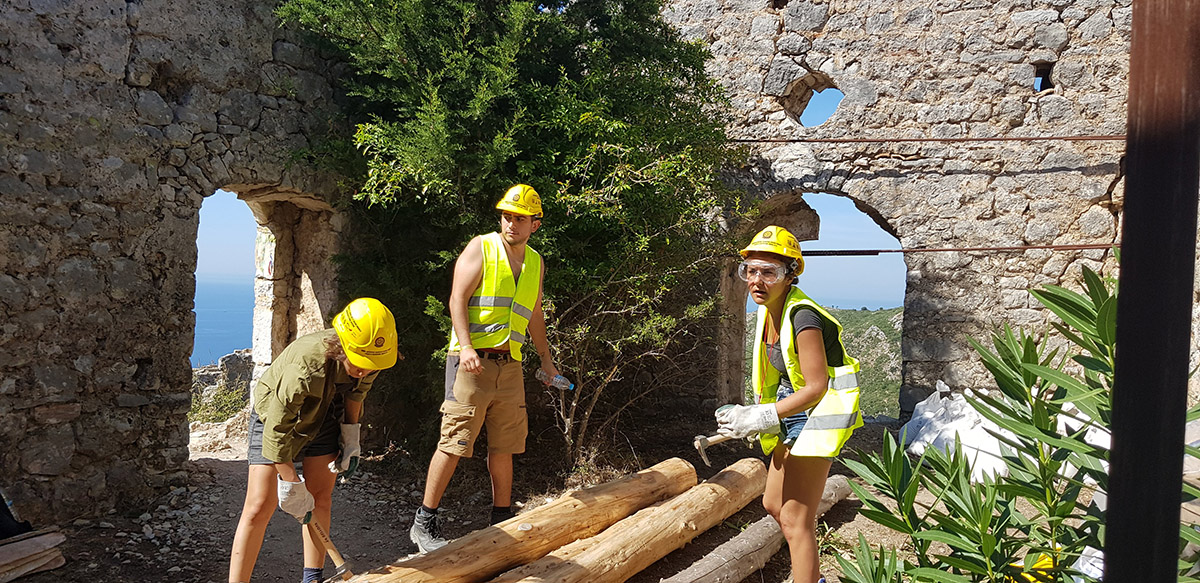
“I stayed a week in Lohra Castle (Thuringia) where we had an introduction week for coordinators. After that, we all went to our different projects. In total, this summer I've been a coordinator in four different projects. First in Freudenstadt (Baden-Wurttemberg), where we work on the documentation of the inside of the Grand Hotel Waldlust from 1898 and the maintenance of the surrounding park. After two weeks there, I went all the way to Weimar to work on the reconstruction of a dry stone wall and maintenance of historical path system at the Belvedere Schloss Park. My next project was in Halberstadt (Saxony-Anhalt) focused on the cleaning and documentation of a Jewish Cemetery from the XVII cemetery. Then, before going to Himare I joined a project in Freiberg (Saxony) regarding technical heritage in a mining area, we did wood shingles for the roof. And at last but not least, I joined the project in Himare”
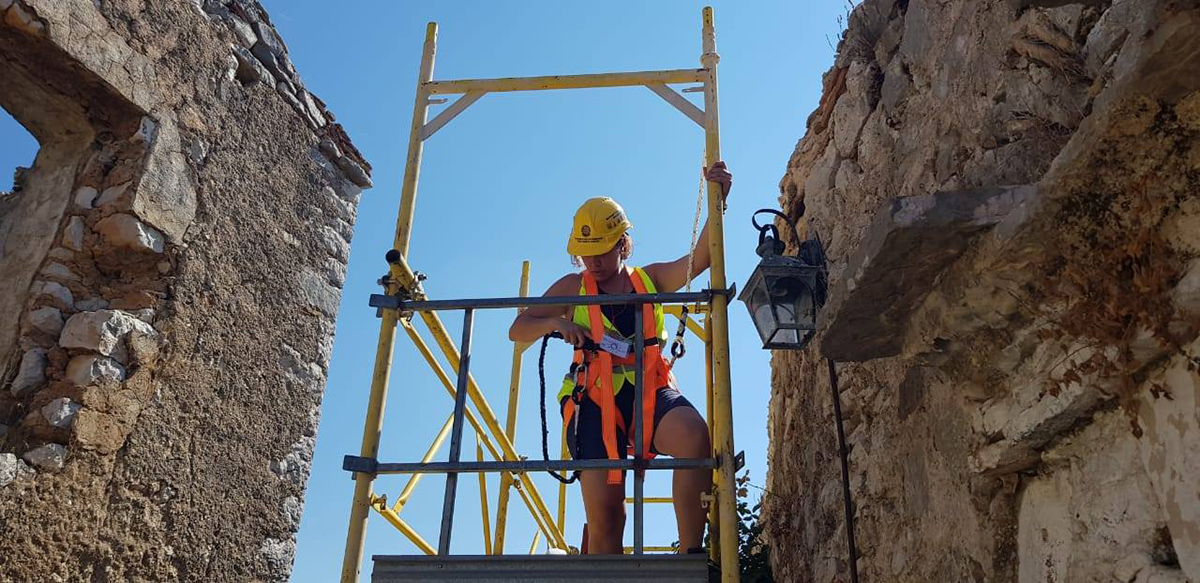
The group’s days in the Historic Town of Himara were divided into working hours and educational activities - including presentations and tours. The structure of the roof was taken down in the first days which was an intensive work for the volunteers, but it was all managed through the help and expertise of the master carpenters, who helped guide in the reconstruction of the wooden roof while instructing the team with local techniques. The project was unique in the sense that it was a fundamental part of the local community. As the volunteers themselves recall, many would visit the siteworks and express their wishes, slowly recovering their space.
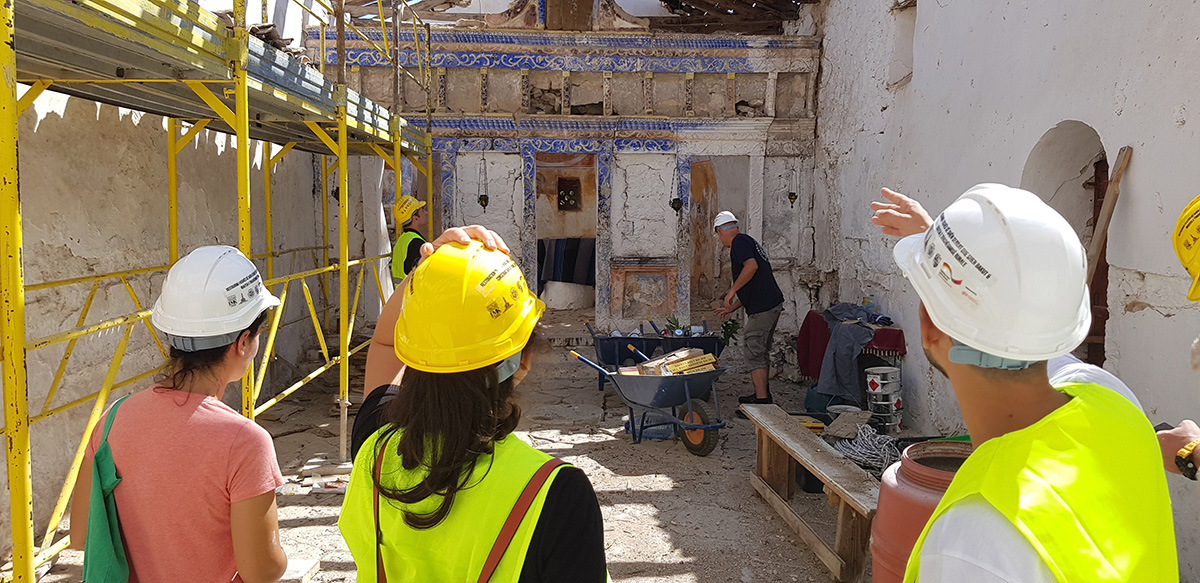
The community was a large influencer and an ever-present facet of the experience. The local pub, below the site of the church, right beside the road, welcoming few guests only during the summer season, now hosted a lively group of youngsters at all hours of the day. Natives would visit the site daily and would bring water and housemade goods to the volunteers. The amalgamation of these small acts was the community’s way of participating in the process of the restoration of the church. Local shops and markets were open and serving the volunteers, and some would sell herbs directly cultivated by them. These acts serve as proof of the activization of the historic town for the small intervention occurred from the 10th to the 21st of September.
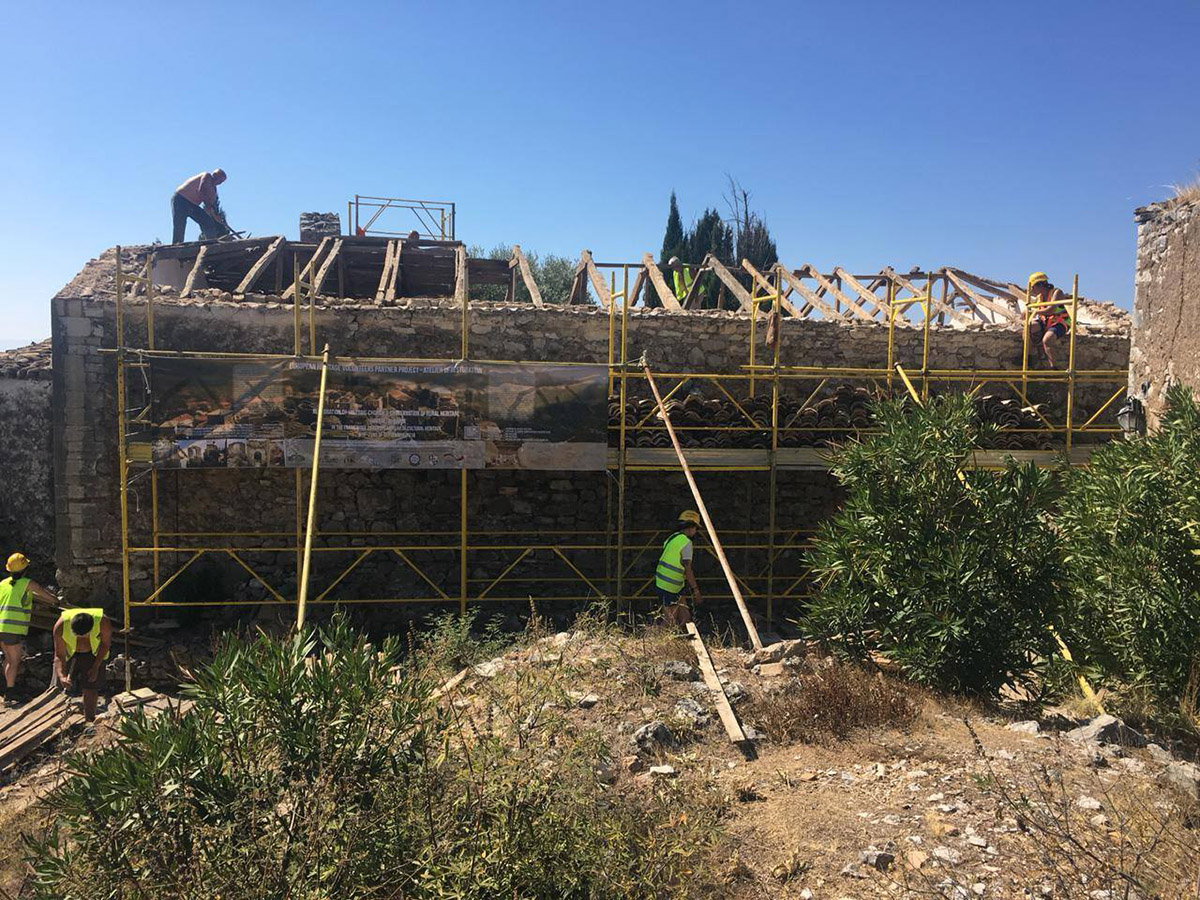
The restoration project of the XI century St. Sergius & St. Bacchu Church in Himara Historic town was presented in the “Volunteering for European Cultural Heritage” Conference on November 8th, 2018 in Leipzig / Germany, as a best practice model of volunteering for European Cultural Heritage.
The conference was organized by European Heritage Volunteers in cooperation with Europe's Leading Trade Fair for Conservation, Restoration and Old Building Renovation “denkmal” in Leipzig, Germany. It is held on the occasion of the European Year of Cultural Heritage and will be the final event of European Heritage Volunteers’ overall project “Best practice models of volunteering for European Cultural Heritage”.
The conference showcased the importance of volunteering as an appropriate tool for the awareness raising, the rescue and the conservation of cultural heritage as well as for the non-formal education in the field of heritage. It served as a platform to present good practice examples, to exchange experiences and to stimulate further heritage volunteering projects all over Europe.
Good practice examples of heritage volunteering projects from Germany and other European countries [including Albania] illustrated the potential of volunteering for cultural heritage. The examples demonstrated the applicability of volunteering for various types of heritage, for various heritage-linked tasks and for different constellations of cooperation between non-governmental organizations, public authorities, foundations and enterprises active in the field of heritage.
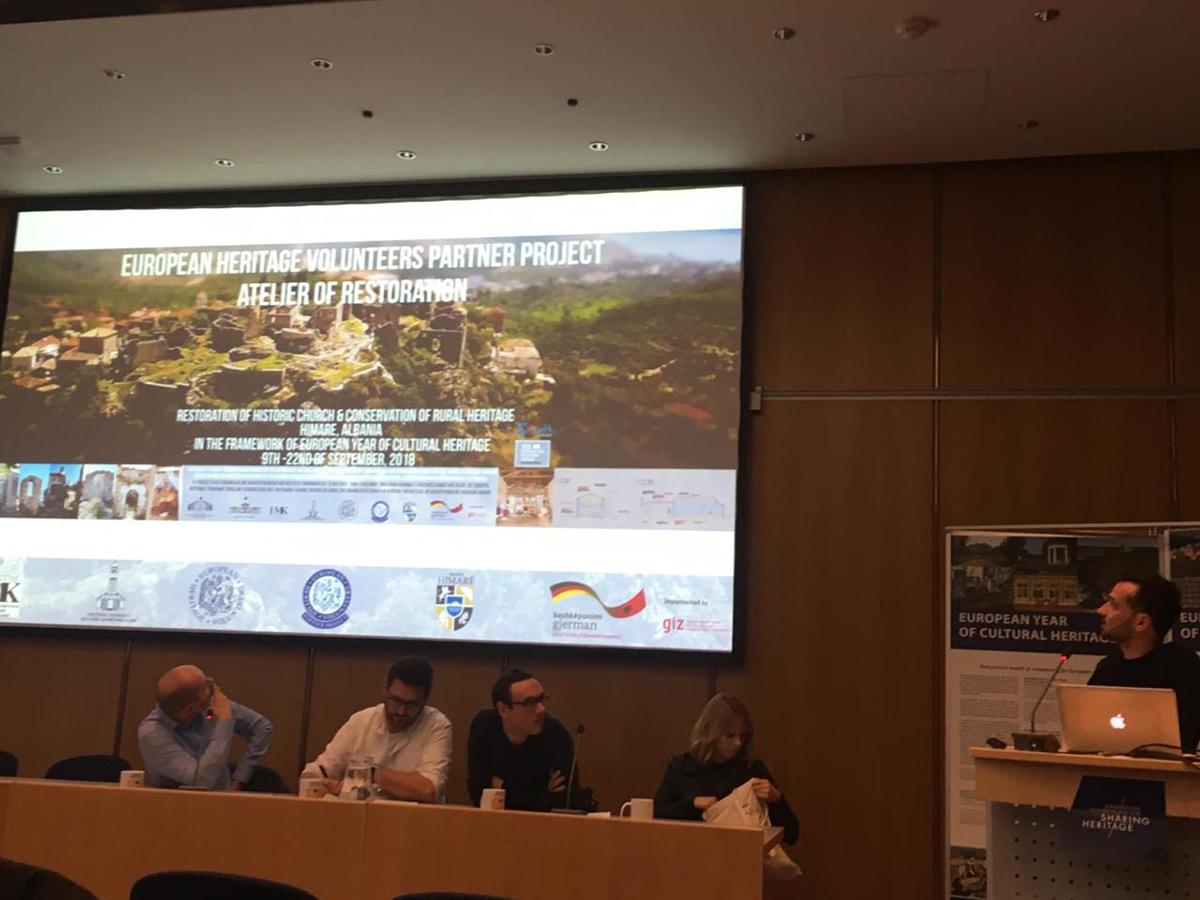
Conference "Volunteering for European Cultural Heritage". Image © European Heritage Volunteers
The church of St. Sergius and Bacchu is located in Himara Historic Town, and is a Ist Category Monument. Built at the highest peak of the historic town, on the southwestern side and next to the ancient castle walls, the church retains traces of numerous reconstructions. It was built in two phases: the first was focused on the naous, with lower parts of the walls, because the upper parts were built several times. An auxiliary facility on the western side, where the water tank is located was built later. The iconostasis frames are decorated with floral motifs. The naos is accessed through an entrance on the west side, and one on the south - which leads to the courtyard. The fresco of the church is better preserved on the interior sides of the semi-circular apse. In the southeastern corner stands a tower bell. A vault, where two eagles are carved, is walled at the northern entrance of the secondary area. The old church walls are made of limestone of medium and small sizes. The special feature of the old walls is the presence in it of the tile pieces, placed above one-another, in between the stones, or even in short segments between the rows of stones.
Top Image © Joerg Daiber, Medienproduktion GmbH. Copyright GIZ
All Images © Eneida Berisha, unless otherwise stated
> via: The Integrated Sustainable Development of the Southern Coastal Region, European Heritage Volunteers,Institute of Monuments of Culture and DRKK Vlore
